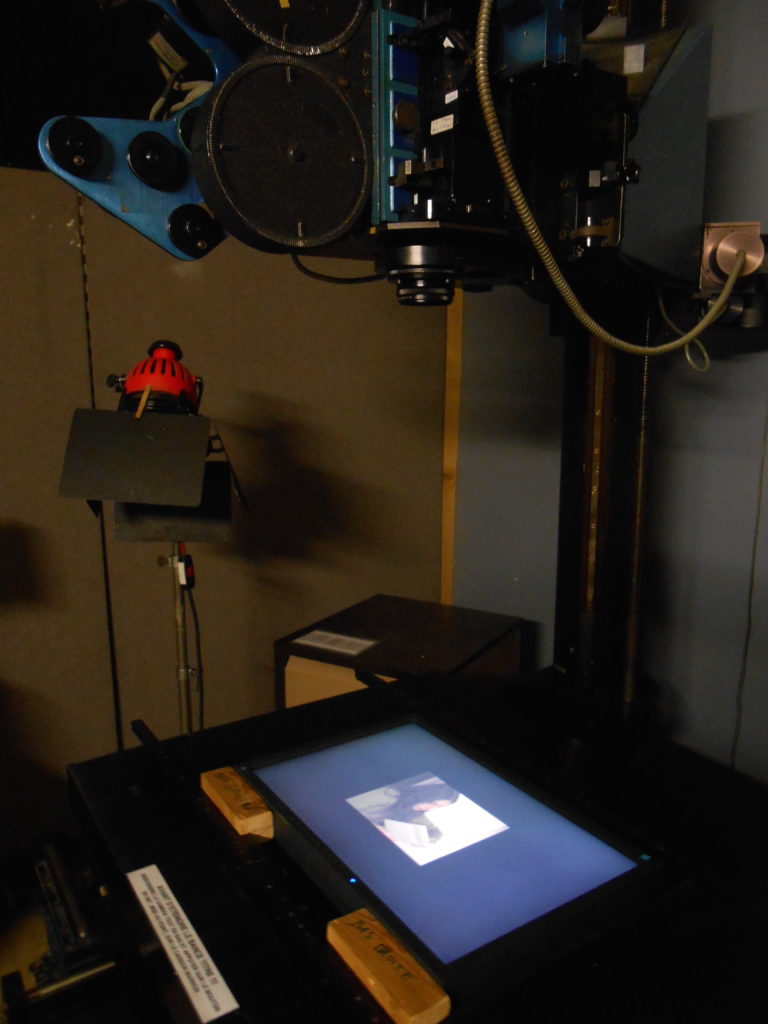
• The animation stand can shoot in 16 mm, Super 16 or 35 mm. The formats can be changed by swapping the gate and sprockets in the camera.
• It is possible to use it to film frame-by-frame all sorts of two-dimensional objects (drawings, photos, titles, etc.) by programming the movements of the cameras or of the table.
• It is also possible to film an image that is projected (using slides or 16 mm or 35 mm film) onto a piece of ground glass that is horizontally embedded in the table, or to film a combination of projected images and transparencies that are placed on the ground glass.

• Another possility is to do what is called kinescoping, which means transferring a video image onto film. To do this, we embed a flat screen into the table of the animation stand, and a piece of software plays a Quicktime sequence frame-by-frame, while the camera films each frame onto a 16 mm or 35 mm negative.
• This allows us to include a video sequence in a photochemical print: for example, archival images, video footage or a title sequence that was made digitally.
• The quality is not bad at all, but it’s important to make sure that the video image is color-graded correctly. This should be seen more as a creative tool than as an easy way to perfectly reproduce a video image on film… It’s not so simple, especially when it comes to contrast, highlights and lowlights, etc.